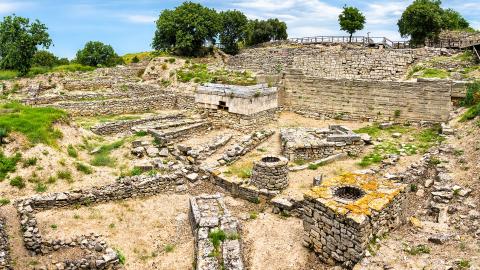Rome, a city of firsts: Rome lay the foundations of what we today consider a city to be. In this infographic we learn about the amazing innovations developed in this city, such as the Roman water supply system, the public welfare system and other amenities such as the postal service, central heating, the world's first landfill and more!
Ancient Supercity
The first apartment buildings (40,000 of them) were each up to five storeys high. Apartments outnumbered single-family homes twenty to one. Rome employed street cleaners, traffic wardens, firemen and even funeral directors, who buried Romans outside city walls. The world's first public welfare system could dispense free grain to up to 300,000 families each year. The city had a postal service and even a daily newspaper. Engineers perfected a form of concrete similar to today's cement, which they used to build the Pantheon, the largest concrete-domed building for more than 18 centuries and Circus Maximus, the biggest sports arena ever, which held five times the capacity of Yankee Stadium.
Water Supply System
Rome had the best water supply system in the ancient world. There were 1,300 public drinking fountains and 144 public toilets. Rome had 850 private baths and 11 public ones, the largest of which covered 32 acres. All this water eventually flowed into the Cloaca Maxima, the world's first sewage system, which is still used today. 11 aqueducts brought more than 200 million gallons of water into the city, every single day. And there was still enough water left over to fill the Colosseum and other venues for epic naval battles, or naumachiae.
Other Firsts
Rome had one million residents by 1 A.D. It would be 1,800 years before another city (London) surpassed that number. The hypocaust, the first central heating system, funnelled warm gas and air below floors. Running water was available for wealthy homes; owners paid an ancient utility tax based on pipe size and usage. Monte Testaccio, the world's first landfill site, was more than 115ft tall and held 53 million pieces of rubbish. Trajan's market, the first shopping mall, was four stories tall and had 150 shops and offices.
















